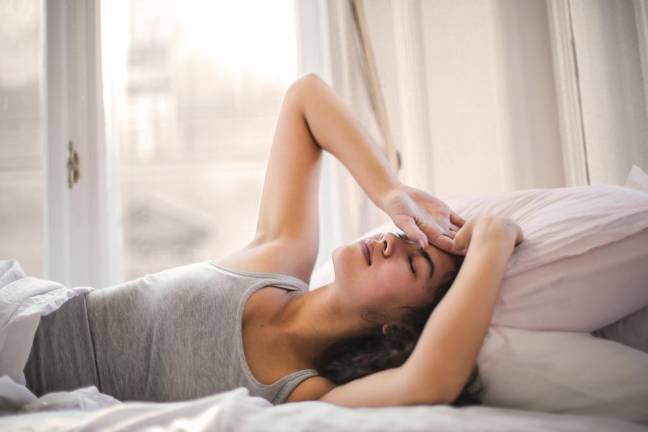What You Need to Know About Sleep Apnea in Women


Snoring is observed more often in men than in women so they’re usually the main subject when we talk about sleep apnea. Most of the time, we picture obese, middle-aged men who snore so loudly it wakes up the whole house. Their snores even wake themselves up sometimes.
Sleep apnea is very common. It can affect both men and women of any age, even children. Because of a lack of awareness, some people are left undiagnosed and untreated.
What is sleep apnea?
Sleep apnea is a sleep disorder that occurs when breathing involuntarily stops and starts during sleep. In every occurrence, the brain suffocates. It is the brain needing more oxygen that makes the person gasp for air in their sleep which manifests as loud snorts or snores.
Aside from snoring, other indications of sleep apnea include sleepiness even after a full night’s rest, waking up out of breath in the middle of the night, and waking up with a headache or xerostomia in the morning.
Untreated sleep apnea will persist and, in the long run, may lead to compromised cardiovascular health and brain damage. Therefore, even if the symptoms are not present consistently, it’s best to talk to a doctor when they start occurring on a regular basis.
The cause of sleep apnea varies and this variation determines its type:
· Obstructive Sleep Apnea (OSA)- happens when there’s a blockage in the airway caused by the relaxation of the rear throat muscles
· Central Sleep Apnea- happens when the brain doesn’t signal the muscles necessary for breathing
· Complex or Mixed Sleep Apnea- the combination of OSA and Central Sleep Apnea
When apnea occurs and breathing ceases, the brain briefly and partially wakes the person for the breathing to resume. This sleep disturbance makes the person feel tired during the day.
Among the three types, Obstructive Sleep Apnea is the most common and it falls under 3 categories depending on occurrence-based severity:
· Severe - episodes occur 30 times or more within an hour
· Moderate - episodes occur 15-30 times within an hour
· Mild - episode occur 5-15 times within an hour
If you have any of these symptoms,you should consult your primary doctor or sleep expert online. “According to demographics, men are four times more likely to have OSA than women. The most common cause of OSA is obesity which is associated with soft tissues in the throat that easily relax and block the airway during sleep (causing the “overweight, middle-aged men” stereotype). In women, sleep apnea manifests more often during pregnancy and menopause,”says Dr.Karen W,a gynecologist at DoctorSpring.
However, there are health practitioners who have treated female sleep apnea patients who are not pregnant, below 50 years of age, active, and in good shape. In fact, over the years, the statistics have changed. Currently, women are now half as likely to experience sleep apnea as men. When they reach the age of entering menopause, the ratio becomes 1:1.
Despite all this, the estimates still show that sleep apnea is 8 times more often diagnosed in men than in women. Why is this the case?
Under-diagnosis of sleep apnea in women
Listed below are some reasons why women are not diagnosed and treated for OSA:
· Women experience different and milder symptoms of OSA compared to men. They don’t snore as loudly, breathing difficulties are less apparent, and their apnea episodes occur abruptly and less often. In some cases, they don’t report these mild symptoms.
· Sleep specialists may have a stereotype as to what a person with OSA looks like. As a result, the symptoms experienced by women are often dismissed as insomnia or fatigue.
· The use of the Epworth Sleepiness Scale, the tool that measures sleepiness during the day which can help diagnose OSA, doesn’t seem to apply to women. Despite reporting the same sleepiness levels to men, they can’t obtain a score on the scale. The reason for this hasn’t been identified yet but men and women likely have different thresholds for sleepiness.
· Women often describe their symptoms differently and in non-specific terms, making it hard for doctors to conclusively diagnose sleep apnea. They report mood swings, fatigue, insomnia, depressive mood, and lethargy which are symptoms of disorders other than OSA. Men, on the other hand, specifically state that they snore and experience waking up out of breath.
· Women don’t bring their partners along during doctor’s appointments so their partners couldn’t account for any signs of OSA. As a result, females aren’t usually referred to sleep specialists. Furthermore, they become underrepresented in sleep research.
· Even when women with OSA are more obese than their male counterparts, they still have lower apnea-hypopnea index or AHI.
Based on the reasons stated above, we can conclude that there’s a lack of awareness of the gender differences in symptoms of OSA. Women fall short in recognizing their symptoms and seeking medical attention, and medical professionals respond inaccurately to these symptoms.
Additionally, the generic symptoms described by women (e.g. depression, fatigue) are more frequently observed in them than in men not diagnosed with OSA which tilts the scale down further.
On top of all this, the physical gender difference of the tissues in the airway factors in. Men have softer tissues in their throat which makes it more likely to collapse while they sleep, resulting in episodes of OSA.
How to properly diagnose women with OSA
With time, doctors are becoming more educated on the matter and careful not to frame symptoms based on stereotypes. Efforts are being made on spreading awareness of the prevalence of OSA in women and the risk factors linked to it so they can recognize the symptoms and consult a professional.
Symptoms and risk factors in women with OSA include:
Symptoms
· Snoring (regardless of lightness or loudness)
· Insomnia (difficulty falling and staying asleep)
· Frequently waking up
· Irritability
· Anxiety and depression
· Clumsiness
· Lethargy
· High blood pressure that’s hard to manage despite medications
· Feeling tired after a good night’s sleep
· Diabetes
Risk Factors
· Women under certain conditions are more likely than most to develop OSA.
· Obesity can put women at risk for OSA. The risk is higher in overweight women than in overweight men.
· Smoking, too much alcohol consumption, and genetic factors also increase women’s likelihood of developing OSA. Up to 40% of people with sleep apnea have likely inherited physical attributes that lead to the condition.
· Ethnic background can also be a risk factor. Sleep apnea is more prevalent in people of Hispanic or African-American descent.
· Having PCOS or Polycystic Ovary Syndrome is also a risk factor. PCOS and OSA are associated with being overweight. But, obese or not, women who have PCOS are still more at risk than those who don’t.
· Pregnancy also puts women at more risk for OSA. Aside from weight gain, the physical changes of a woman’s body as her baby grows inside her affect her breathing.
· The chances of women developing OSA rises as they experience menopause. As women age, they become almost as likely as men to develop OSA. Female hormones aid in women’s sleep and breathing so when hormones decrease during menopause, women become at risk for sleep apnea.
· Allergies and a deviated septum also put women at risk.
Health risks and consequences
When OSA is not treated properly, it can compromise cardiovascular health and increase risk of death. This is especially true of women who are more likely than men to experience heart damage, enlargement, and other complications.
It can also affect the brain and its cognitive functions. Over time, notable concerns regarding attention and memory will arise. In severe cases, OSA eventually leads to dementia and increases the risk of Alzheimer’s disease.
Depression is also a consequence of untreated severe OSA, and it is observed more frequently in women than in men.
Due to sleepiness during the day and clumsiness, obstructive sleep apnea can also increase a person’s risk for vehicular accidents.
Treatment
Continuous Positive Airway Pressure (CPAP) therapy has been proven to mitigate the effects of moderate and severe OSA. However, its effect on mild OSA is unverified. CPAP has shown to reduce mood swings and sleepiness and increase energy levels.
For mild to moderate OSA, oral appliances can help. Make sure to consult with a physician to know which appliance works best for you.
Another way to improve the quality of sleep is to shed off those extra pounds. In some cases, losing weight also helps reduce women’s risk for PCOS. Maintaining a healthy weight can save a person from various conditions. It’s about time we stop looking at exercise as a chore.
The longer a disorder is unrecognized, the more risk it brings. This article makes us realize how important it is to stay educated on any developments in women’s health.
This article also teaches us that our genes and biology play a big factor in our risk of sleep apnea; however that doesn’t make us helpless. In this age of technology, we have access to limitless information we can use to our advantage, and it’s easier than ever for us to seek medical help.
So stay aware! When you notice something unusual, acknowledge it and act on it. You can also lower your risk by going your best to stay healthy. Keep that extra weight off.
Sleep well tonight.
Content from Help My Rank.